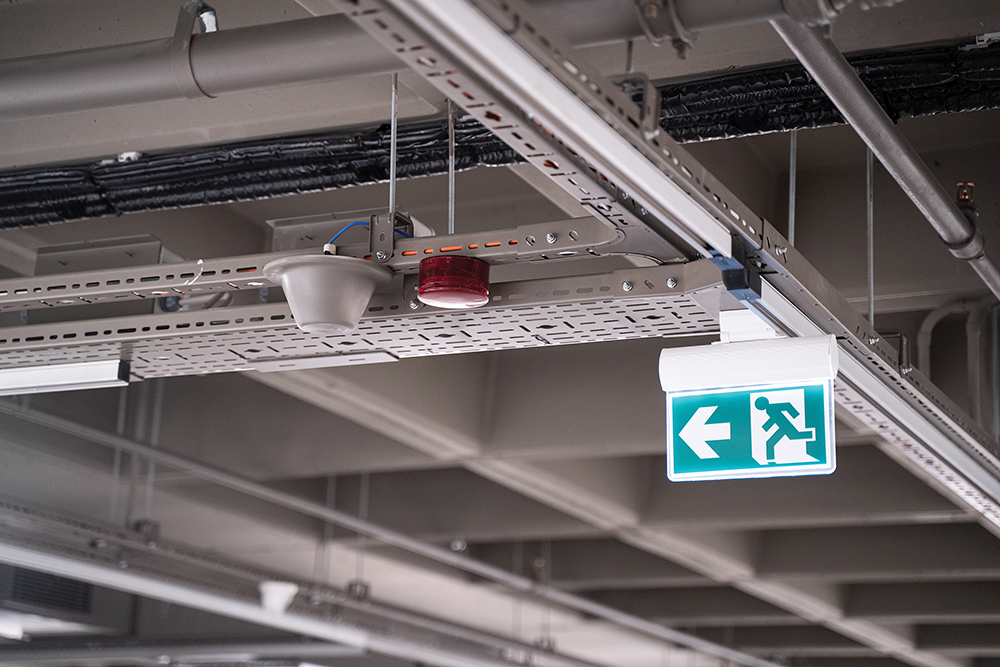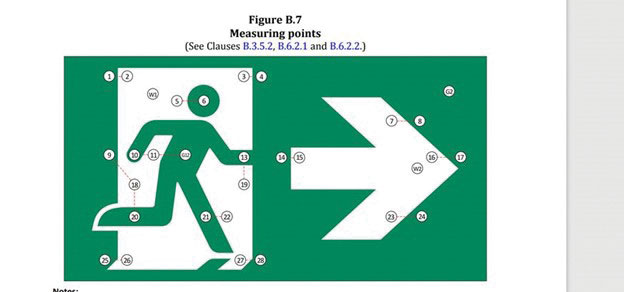All electrical practitioners know too well that water and electricity do not mix. Results of such mixture are quite hazardous.
This is the reason that the CE Code mandates GFCI protection of receptacles and permanently connected electrical equipment installed in proximity to water (i.e., pools, bathtubs, sinks, shower stalls, etc.).
This is also the reason that electrical equipment installed in wet or outdoor locations, or indoors where the equipment enclosure may be subjected to direct streams of water or to drops of falling liquid due to condensation, must be selected with enclosures for the intended use with a degree of protection as specified in Table 65 of the CE Code.
Only then, in accordance with Rule 2-024 of the CE Code, such electrical equipment would be deemed approved for the specific purpose for which it is to be employed.
So far, so good.
But what about various types of electrical equipment installed indoors in ordinary locations of a building that is sprinklered?
What requirements of Table 65 would be applicable in this case and does the CE Code have any specific provisions in this regard?
Before we’ll evaluate the requirements of the installation code on this subject, let’s find out whether the product standards contain any requirements for design, construction, testing and marking of electrical equipment subjected to a potential impact of water discharge from a building sprinkler system.
For example, the CSA standard C22.2 No. 47 “Air-Cooled Transformers (Dry type)” contains the following provision:
From C22.2 No. 47
4.2.7 Sprinklerproof Enclosures
Enclosures for transformers to be located indoors in areas where sprinklers are present shall
(a) comply with the requirements of CSA Standard CAN/CSA-C22.2 No. 94 for enclosure Type 3R except that the test requirements for protection against sleet and formation of ice on the enclosure shall not apply; and
(b) be marked in accordance with Clause 5.6.
5.6
(a) sprinklerproof when the angle between sprinkler heads and openings in the enclosure does not exceed 45° from the vertical, or
(b) sprinklerproof when installed in accordance with installation instructions.
But what about other standards?
“Where electrical equipment is intended to be installed indoors in areas that are sprinklered in accordance with the National Building Code of Canada, such electrical equipment shall be approved for the purpose and marked accordingly.”
However, it would be a quite difficult task to review hundreds of product standards for sprinkler protection requirements.
And is it really necessary?
Does all electrical equipment have to be constructed with means of sprinklerproof protection?
The answer is “NO.”
Sprinklers serve an essential role of automatic fire suppression when a rate of temperature rise is sufficient to activate a sprinkler head.
So, for all practical purposes, the electrical equipment located in any sprinklered building should be selected for use indoors in an ordinary location (unless specific conditions of installations will require a different approach). When a sprinkler system is activated in a building, it must be for a good reason—to suppress the fire. In this case, a sprinklerproof protection of equipment is hardly justified.
Of course, there could be some special provisions for protection of a very sensitive equipment installed in specialized restricted areas (computers, control equipment, etc.) which is deemed to be necessary to be protected from accidental sprinkler discharge. In these cases, designers might make requests to the regulators administering the NBCC in applicable jurisdictions, to consider equivalent solutions to sprinklering (such as a dry system, use of pre-action solenoids, etc.). This is usually done on an individual basis.
In general, the CEC is silent on this subject. This means that the code users should not worry about a presence of sprinklers in a building in respect to selection of electrical equipment.
However, when service equipment (particularly HV equipment) is installed in an electrical equipment room or a vault, Rule 26-008 of the CE Code specifically requires protection of the equipment located in such electrical equipment room or vault againstaccidental dischargeof a sprinkler system. Appendix B Note on this Rule provides necessary clarification of this requirement.
The Code users should be aware, that when field modifications are made to the electrical equipment in order to accomplish provisions of Rule 26-008, the equipment must be re-certified to meet requirements of the standard to which it was originally designed and constructed.
It is interesting to note that B44, Elevator Code, requires that sprinklers installed in hoistways, machine rooms and machinery spaces must be “equipped with guards to protect them against accidental damage.”
It is also interesting to note that the NBCC recognizes hazards (of mixing electricity and water) by not mandating installation of sprinklers in an electrical equipment vault.
Sentences 3.6.2.7.(2) and (3) of the NBCC specify conditions under which sprinklers may be exempt in an electrical equipment vault located in a building (that otherwise is required to be sprinklered).
It should be noted that an electrical equipment vault is mandated for dielectric liquid-filled equipment only (Rule 26-012 of the CE Code), and the majority of power and distribution transformers and switching equipment used in electrical installations are of a dry type. Thus, electrical equipment rooms built for the service equipment (including HV equipment) do not necessarily meet the NBCC construction requirements for an equipment vault. So, what do we do if we want to exempt such electrical equipment service rooms from being sprinklered?
The answer is in NFPA 13.
NFPA 13 is a standard for installation of a sprinkler system (this standard is referenced by the NBCC for sprinkler requirements). This standard also recognizes that sprinklers may be omitted in an electrical equipment room. Article 4.13.10 of NFPA 13 allows one to exempt an electrical equipment room from being sprinklered if the electrical equipment room containsonlyelectrical equipment, the room is not used for any other purpose and the room is separated from the remainder of the building by the 2-hour fire separation of solid masonry and concrete.
City of Vancouver, for example, would allow such exemption if in addition to the referenced requirements of NFPA 13 the room is equipped with the smoke detector represented on the building fire alarm system as a separate fire alarm initiating zone.
So, it appears that the sprinkler protection of electrical equipment is (in general) non-issue.
However, as usual, regulatory authorities must be consulted where particular issues regarding sprinkler protection of electrical equipment or sprinkler exemption of specific areas of a building might arise.














Find Us on Socials